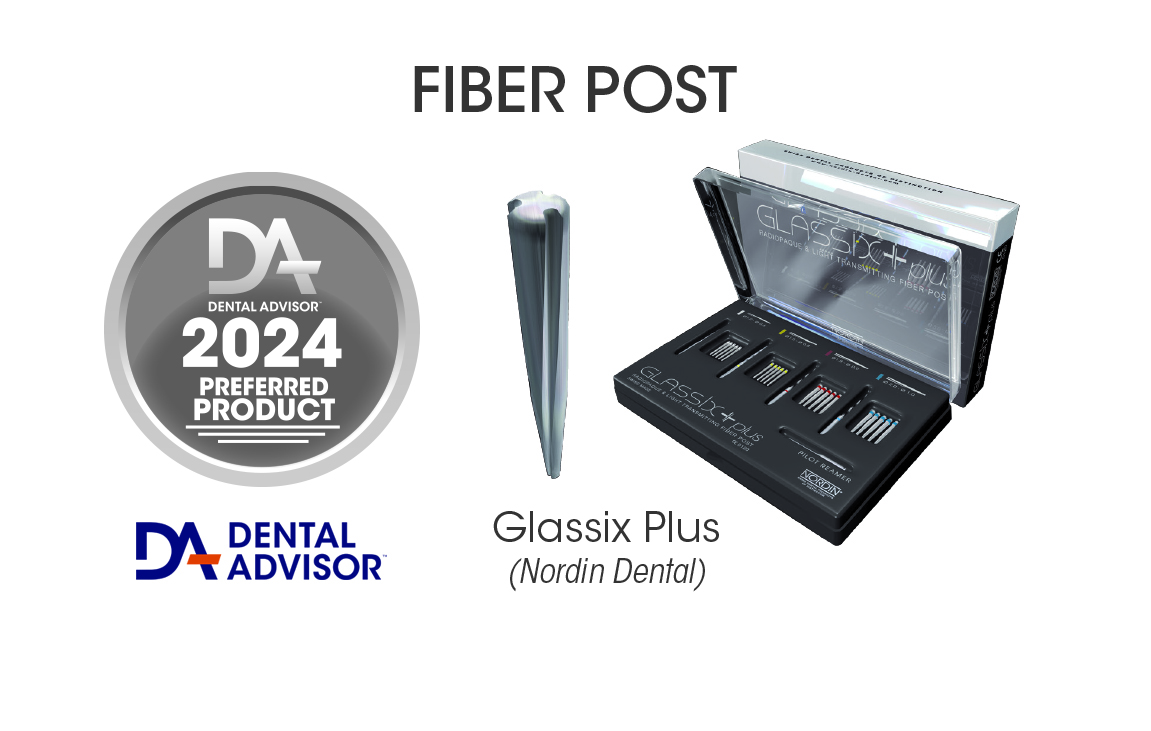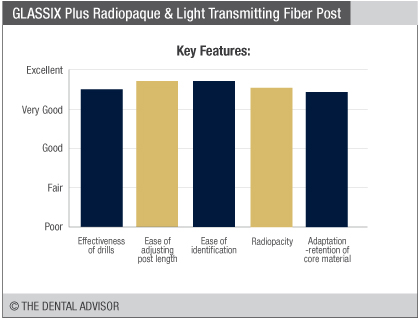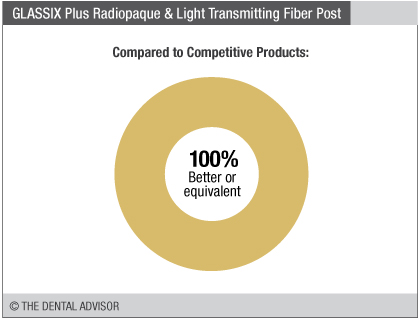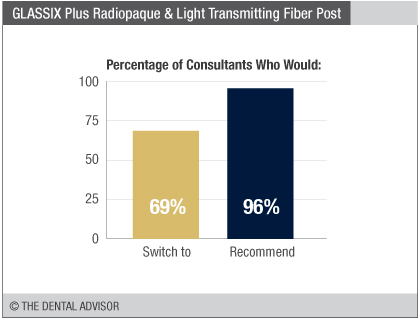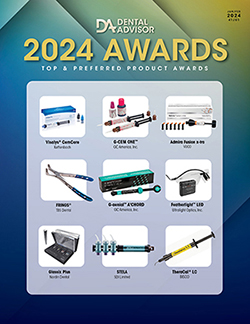Clinical Evaluations
GLASSIX Plus Radiopaque & Light Transmitting Fiber Post
Consultants’ Comments
- “Drills were superb – cut smoothly, cleanly, without chattering and resulted in a perfect slip fit of the post.”
- “I really liked the prep drills. Nice shape and taper. Efficient cutting.”
- “Easy to achieve superb results, clinically confidence inspiring.”
- “Can’t beat the packaging and size selection of the posts.”
- “Can’t see where or how these posts can be improved upon. Excellent product, highly recommended.”
Clinical Tips
- Remember to use the color coded bands to determine where to shorten the post.
- Don’t cut post until after it is cemented and core is complete.
- Use lots of irrigation while using drills to create post space.
- Create some grooves for retention.
- Microetch or sandblast the posts prior to insertion.
Evaluation Highlights
- GLASSIX Plus Radiopaque & Light Transmitting Fiber Post was evaluated by 26 consultants, with an average of 8 uses per consultant.
- Excellent light transmission.
- Good tapered design and cross design for better core retention.
- Easy color-coding system to match post drill and post.
- Very efficient, organized system that works really well.
- Good adaptation after post prep.
- Posts and post drills are easy to use and do not remove excess tooth structure.
- Good radiopacity and degree of taper.
Description
GLASSIX Plus Radiopaque & Light Transmitting Fiber Post is designed with anatomically-shaped, esthetic posts that are available in four sizes. The posts offer a high flexural strength, reported at 1500 MPa, and conduct light for utilization of dual-cured resin cements. The posts are accompanied by adjustable color-coded rings that are used for post size and demarcation. GLASSIX Plus Radiopaque & Light Transmitting Fiber Post comes with a pilot reamer, 5 posts for each of the 4 sizes, and 1 matching sized drill for each size of post.
Indications
- Endodontic post procedures
Unique Features
The GLASSIX Plus Radiopaque & Light Transmitting Fiber Post features twisted grooves for mechanical retention without breaking points. The posts reportedly have an elastic modulus that is close to that of dentin (20 GPa).

